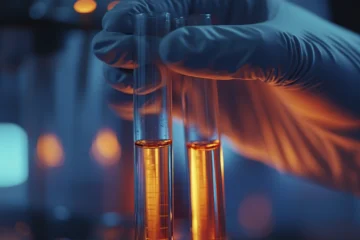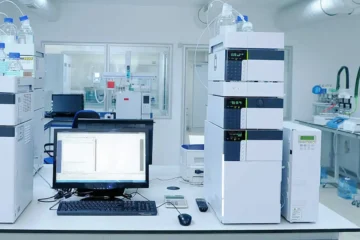High-Performance Liquid Chromatography (HPLC) is an essential analytical technique used in various fields, including pharmaceuticals, environmental testing, and food safety. The choice of detector in HPLC can significantly influence the quality and reliability of analytical results. Two widely used detectors are the Refractive Index Detector (RID) and the Variable Wavelength Detector (VWD). Understanding the differences between these two detectors is crucial for selecting the appropriate one for your specific application.
Overview of HPLC Detectors
HPLC detectors play a pivotal role in identifying and quantifying compounds as they elute from the chromatographic column. They convert the physical changes caused by the passage of analytes into measurable signals, which can then be analyzed and interpreted. The choice of detector often depends on the nature of the compounds being analyzed, the required sensitivity, and the type of information needed.
Refractive Index Detector (RID)
The Refractive Index Detector (RID) is one of the oldest and most commonly used detectors in HPLC. It measures the change in the refractive index of the mobile phase as analytes pass through the detection cell.
Key Features of RID:
- Principle of Operation: The RID operates based on the principle that different substances have different refractive indices. When a sample passes through the detector, it alters the refractive index of the mobile phase. This change is detected and converted into a signal.
- Universal Detection: One of the significant advantages of RID is its universal applicability. It can detect nearly all compounds that cause a change in refractive index, making it useful for a wide range of applications, including sugars, alcohols, and lipids.
- Sensitivity: While RID is a versatile detector, it generally has lower sensitivity compared to other detectors like VWD. It is typically more effective for detecting larger concentrations of analytes.
- Limitations: RID is less effective for compounds with low refractive index differences and cannot be used for samples with low concentration levels. Moreover, it is not suitable for gradient elution methods due to the influence of the mobile phase composition on the refractive index.

Variable Wavelength Detector (VWD)
The Variable Wavelength Detector (VWD) is another popular HPLC detector that measures the absorbance of light at specific wavelengths as analytes elute from the column.
Key Features of VWD:
- Principle of Operation: The VWD uses a light source that emits light across a spectrum of wavelengths. A monochromator then selects a specific wavelength to analyze the absorbance of the eluting analyte. The absorbance is measured as a function of concentration according to Beer-Lambert’s law.
- Sensitivity and Selectivity: VWD offers higher sensitivity and selectivity than RID, making it more effective for detecting compounds at low concentrations. It can be fine-tuned to specific wavelengths for optimal detection of particular analytes, allowing for enhanced specificity.
- Wide Range of Applications: VWD is particularly effective for compounds that absorb UV or visible light, including most organic compounds and many pharmaceuticals. It is commonly used in the analysis of drug formulations, natural products, and environmental samples.
- Limitations: One major limitation of VWD is that it is not a universal detector. It cannot detect compounds that do not absorb UV or visible light. Additionally, VWD performance can be affected by the presence of interfering substances that may absorb light at similar wavelengths.
Key Differences Between RID and VWD
1. Principle of Detection
- RID: Measures changes in refractive index.
- VWD: Measures absorbance of light at specific wavelengths.
2. Universality vs. Selectivity
- RID: Universal; can detect nearly all analytes that alter refractive index.
- VWD: Selective; effective only for analytes that absorb UV or visible light.
3. Sensitivity
- RID: Generally lower sensitivity, better for higher concentration samples.
- VWD: Higher sensitivity, capable of detecting low concentration analytes.
4. Ideal Applications
- RID: Ideal for sugars, alcohols, lipids, and other compounds that do not absorb UV light.
- VWD: Best for organic compounds and pharmaceuticals, especially those that absorb in the UV/visible range.
5. Impact of Mobile Phase
- RID: Sensitive to changes in mobile phase composition, especially in gradient elution.
- VWD: Less affected by mobile phase composition as long as the wavelength remains optimal.
6. Cost and Complexity
- RID: Generally less expensive and simpler to operate.
- VWD: More expensive and may require more complex setup due to the need for a light source and monochromator.
Choosing Between RID and VWD
When deciding between RID and VWD for HPLC analysis, consider the following factors:
- Nature of Analytes: Determine if your analytes have significant UV absorbance. If they do, VWD may be the better choice.
- Concentration Levels: If you are working with low-concentration samples, VWD’s higher sensitivity can provide more reliable results.
- Application Requirements: Consider the specific needs of your application. For instance, if you are analyzing a mixture of compounds where some do not absorb UV light, RID might be more appropriate.
- Budget Constraints: If budget is a concern, RID can provide a cost-effective solution for many applications.
- Method Development: Consider the complexity of method development and the potential for interference. VWD may require careful wavelength selection, while RID can simplify method development.
In conclusion, both Refractive Index Detectors (RID) and Variable Wavelength Detectors (VWD) have unique advantages and limitations that make them suitable for different applications in HPLC. RID is a universal detector ideal for certain types of compounds, while VWD offers higher sensitivity and selectivity for analytes that absorb light. Ultimately, the choice between RID and VWD should be guided by the specific requirements of your analysis, the nature of the compounds you are studying, and the overall objectives of your research or quality control processes. By understanding the differences between these detectors, you can make a more informed decision that enhances the reliability and accuracy of your HPLC analyses.




